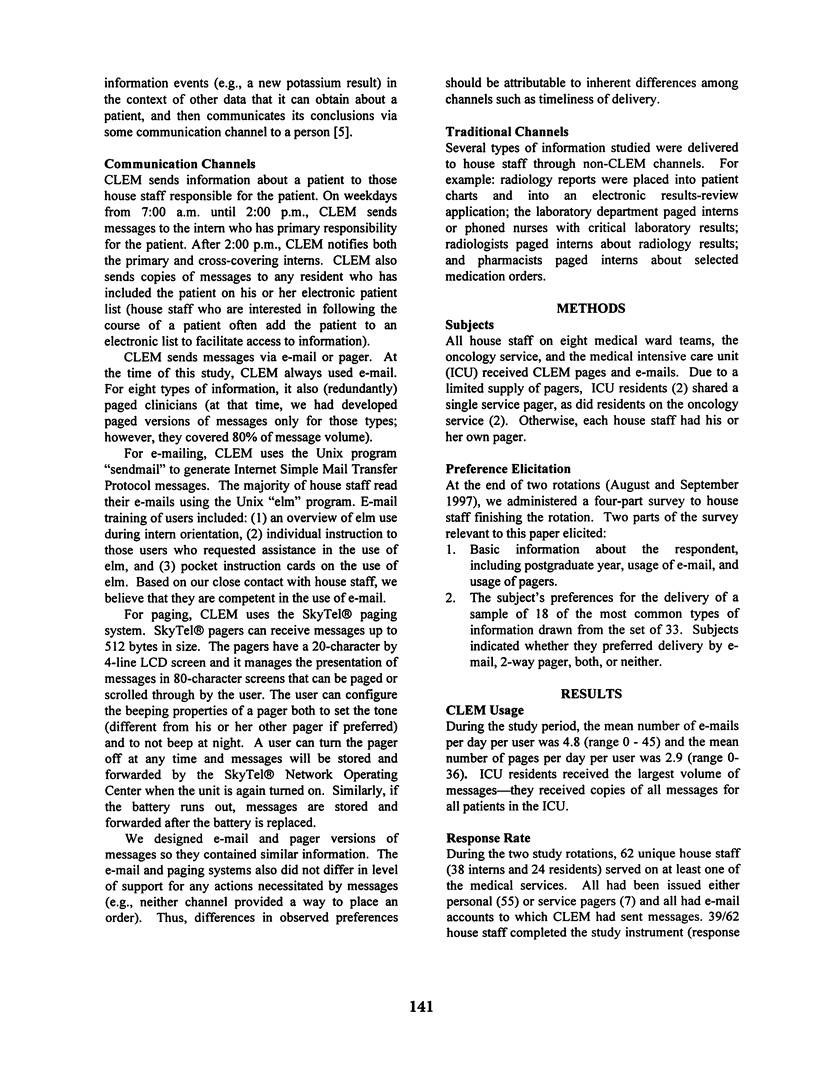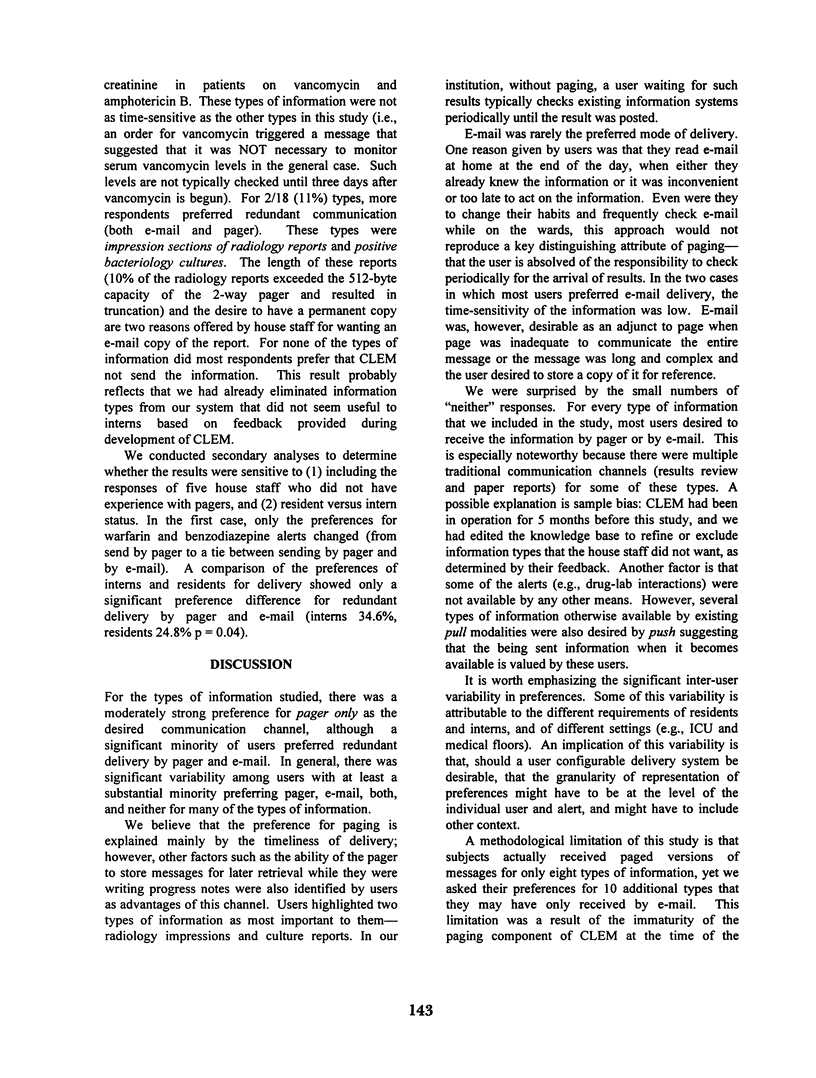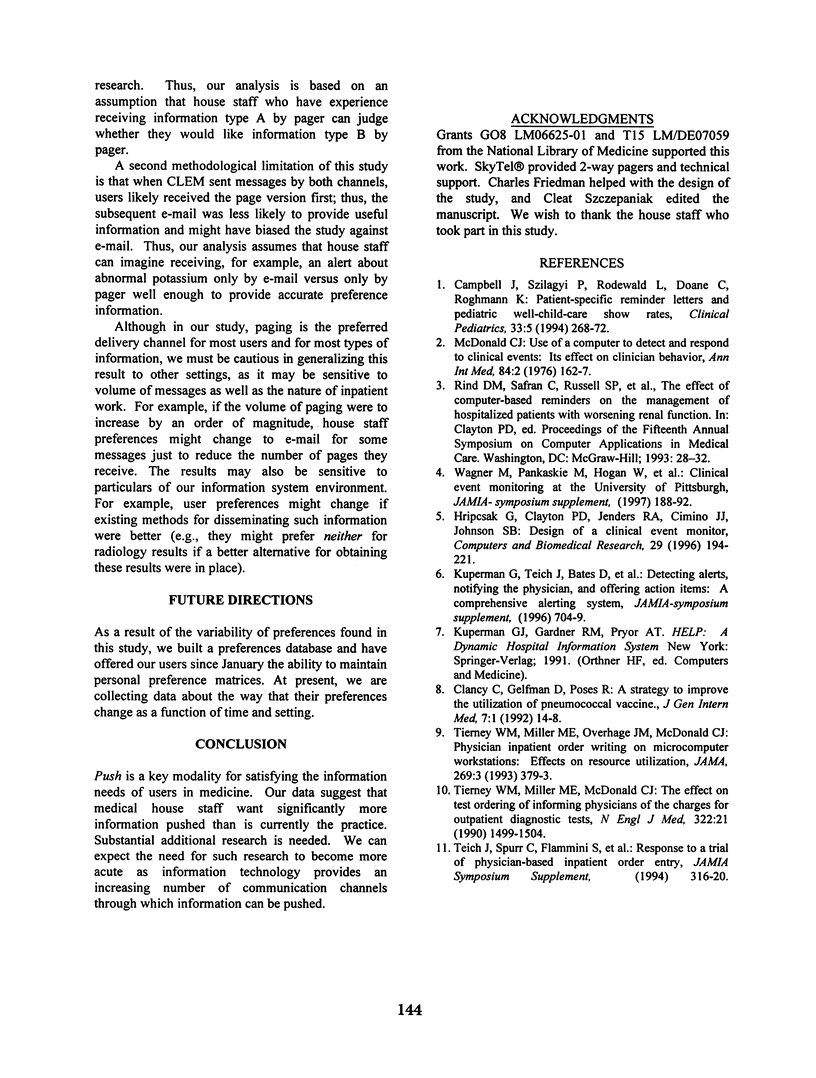Abstract
We elicited from medical house staff their preferences for e-mail and alphanumeric pager as communication channels for the delivery of 18 different types of clinical information about their inpatients. For each type, we calculated the proportion of users who preferred delivery by e-mail, pager, both, or neither (usual delivery). For 14/18 (78%) types, more users preferred delivery by pager than by the other options. For 2/18 (11%) types, e-mail was preferred. For 2/18 (11%) types, more users preferred redundant delivery using both channels. For no types did more users prefer neither, meaning that the information would be delivered by traditional channels, if any. We conclude that medical house staff in the inpatient setting prefer to receive many types of clinical information by pager. The reason may be that they otherwise would have to query clinical information systems for these data, which is wasteful of their time and introduces delays into the process of care. Additionally, we found significant inter-user variability, suggesting that it may be useful for the notification services of an enterprise to employ user profiles for the delivery of clinical information.
Full text
PDF




Selected References
These references are in PubMed. This may not be the complete list of references from this article.
- Campbell J. R., Szilagyi P. G., Rodewald L. E., Doane C., Roghmann K. J. Patient-specific reminder letters and pediatric well-child-care show rates. Clin Pediatr (Phila) 1994 May;33(5):268–272. doi: 10.1177/000992289403300503. [DOI] [PubMed] [Google Scholar]
- Hripcsak G., Clayton P. D., Jenders R. A., Cimino J. J., Johnson S. B. Design of a clinical event monitor. Comput Biomed Res. 1996 Jun;29(3):194–221. doi: 10.1006/cbmr.1996.0016. [DOI] [PubMed] [Google Scholar]
- Kuperman G. J., Teich J. M., Bates D. W., Hiltz F. L., Hurley J. M., Lee R. Y., Paterno M. D. Detecting alerts, notifying the physician, and offering action items: a comprehensive alerting system. Proc AMIA Annu Fall Symp. 1996:704–708. [PMC free article] [PubMed] [Google Scholar]
- Tierney W. M., Miller M. E., McDonald C. J. The effect on test ordering of informing physicians of the charges for outpatient diagnostic tests. N Engl J Med. 1990 May 24;322(21):1499–1504. doi: 10.1056/NEJM199005243222105. [DOI] [PubMed] [Google Scholar]
- Tierney W. M., Miller M. E., Overhage J. M., McDonald C. J. Physician inpatient order writing on microcomputer workstations. Effects on resource utilization. JAMA. 1993 Jan 20;269(3):379–383. [PubMed] [Google Scholar]
- Wagner M. M., Pankaskie M., Hogan W., Tsui F. C., Eisenstadt S. A., Rodriguez E., Vries J. K. Clinical event monitoring at the University of Pittsburgh. Proc AMIA Annu Fall Symp. 1997:188–192. [PMC free article] [PubMed] [Google Scholar]


